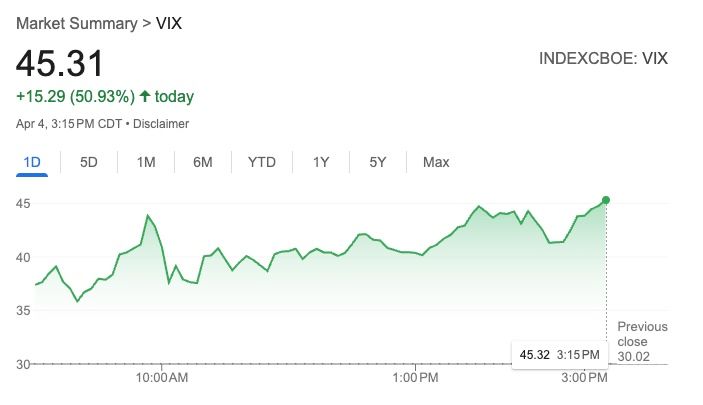Fed Rate Cut Sparks U.S. Housing Market Revival: What Investors Need to Know
In September 2024, the Federal Reserve’s decision to cut interest rates by half a percentage point has had a significant impact on the U.S. housing market. This report delves into the multifaceted effects of this rate cut, focusing on the surge in mortgage applications and homebuyer activity as reported by Redfin. By examining various aspects such as mortgage rates, housing prices, supply constraints, and affordability issues, this report aims to provide a comprehensive understanding of the current housing market dynamics. The analysis is based on the most recent data and insights from multiple sources, including NPR, CNN, Redfin, Freddie Mac, Fannie Mae, and Goldman Sachs.
Introduction
Impact of the Federal Reserve’s Rate Cut
Mortgage Rates
The Federal Reserve’s decision to cut interest rates by 50 basis points has led to a noticeable decline in mortgage rates. As of September 2024, the average 30-year fixed mortgage rate has dropped to 6.09%, down from 7.79% in October 2023. This reduction in borrowing costs has made homeownership more accessible for many Americans.
Economists predict that mortgage rates could fall further, potentially reaching around 5.5% by the end of 2025. This anticipated decline is expected to continue driving demand for mortgages, as lower rates reduce monthly payments and make it easier for borrowers to qualify for loans.
Housing Prices
While lower mortgage rates have made borrowing more affordable, they have also contributed to increased competition among buyers. This heightened demand has put upward pressure on housing prices. According to Goldman Sachs, U.S. home prices are forecasted to rise by 4.5% in 2024 and 4.4% in 2025. This price appreciation is driven by strong household formation and limited housing supply.
The increase in housing prices poses a challenge for first-time homebuyers, who may find it difficult to compete in a market with limited inventory. Despite the affordability gains from lower mortgage rates, the rising cost of homes could offset these benefits, particularly in regions with severe housing shortages.
Housing Supply Constraints
Encouraging Homebuilders
One of the anticipated benefits of the Federal Reserve’s rate cut is the potential to stimulate new home construction. High interest rates had previously hindered new developments, exacerbating the shortage of starter homes. The rate cut is expected to encourage homebuilders to resume or increase construction, addressing the significant shortfall of housing units in the U.S.
Currently, builders are delivering approximately 1 million units per year, which is roughly half the levels seen in 2006. To meet the demand, estimates suggest a need for 1 to 3 million more units, or over 7 million when adjusting for low- and middle-income households. Increasing the housing supply is crucial for alleviating the affordability crisis and ensuring that more Americans can achieve homeownership.
Lock-In Effect
The “lock-in effect” has been a significant factor in reducing housing resale activity. Many homeowners with mortgage rates below 4% have been reluctant to sell their homes and enter the market again at higher rates. The recent rate cuts may alleviate this effect, encouraging more homeowners to list their properties and increasing the available inventory.
However, the impact of the rate cuts on the lock-in effect may take time to materialize. Economists anticipate that it could take three to four months for the effects of lower mortgage rates to significantly impact housing demand as buyers and sellers adjust their plans.
Affordability Challenges
Income Growth vs. Home Prices
Despite the recent rate cuts, affordability remains a significant challenge for many prospective homebuyers. Home prices have surged by about 50% since early 2020, outpacing income growth. As a result, many buyers still find homes unaffordable, even with lower mortgage rates.
Goldman Sachs forecasts that affordability may stabilize through a gradual decline in mortgage rates and positive income growth, projected at 2.4% in 2024 and 2.1% in 2025. However, the ongoing affordability crisis, characterized as the worst since the early 1980s, continues to constrain housing activity.
Regional Disparities
Affordability challenges vary significantly across different regions. The Midwest, Northeast, and California (particularly San Diego) have seen the strongest home price growth, while Florida faces challenges with lower income growth and rising insurance costs, making it one of the least affordable states.
Addressing these regional disparities is essential for creating a more balanced housing market. Localities need to increase housing supply to match rising populations and ensure that affordability improvements are realized across the country.
Market Dynamics and Future Outlook
Homebuyer Activity
The Federal Reserve’s rate cut has led to a significant increase in homebuyer activity. According to Redfin, mortgage-rate locks increased by nearly 70% on September 23, 2024, compared to the previous month. Mortgage-purchase applications also saw a more than 10% increase month-over-month.
The Redfin Homebuyer Demand Index, which tracks home tours and other buying services, reached its highest level since May 2024, showing a 7% increase from the previous month and a 1% annual increase. This surge in activity indicates that buyers who were waiting for the Fed’s rate cut are now committing to purchases, leading to an uptick in home sales over the coming weeks.
Existing Home Sales
Despite the increase in mortgage applications, existing home sales have shown limited movement. As of September 2024, existing home sales are projected to hit their lowest level in nearly 30 years, with estimates indicating the annual pace will be the slowest since 1995. This decline is attributed to ongoing affordability challenges and the lock-in effect.
The Fannie Mae Economic and Strategic Research (ESR) Group notes that recent data shows softness in pending home sales and mortgage applications. The pending home sales index, a leading indicator of future home sales, declined by 5.5% month-over-month in July 2024, highlighting the ongoing challenges in the housing market.
New Home Sales
New home sales have also faced challenges, with a 3% year-over-year decline as of July 2024. However, the recent rate cuts and improving conditions are expected to support a gradual recovery in sales and affordability. The anticipated increase in new home construction could help address the supply constraints and provide more options for prospective buyers.
Conclusion
The Federal Reserve’s recent rate cut has had a profound impact on the U.S. housing market, leading to a surge in mortgage applications and homebuyer activity. While lower mortgage rates have made borrowing more affordable, they have also intensified competition among buyers, driving up housing prices.
The ongoing affordability challenges and housing supply constraints continue to pose significant hurdles for the market. Addressing these issues requires a multifaceted approach, including increasing new home construction, alleviating the lock-in effect, and ensuring that income growth keeps pace with rising home prices.
Overall, the Fed’s rate cut has provided a much-needed boost to the housing market, but substantial improvements in affordability and supply are necessary to create a more balanced and sustainable market. The coming months will be crucial in determining the long-term impact of these rate cuts and the overall trajectory of the housing market.


